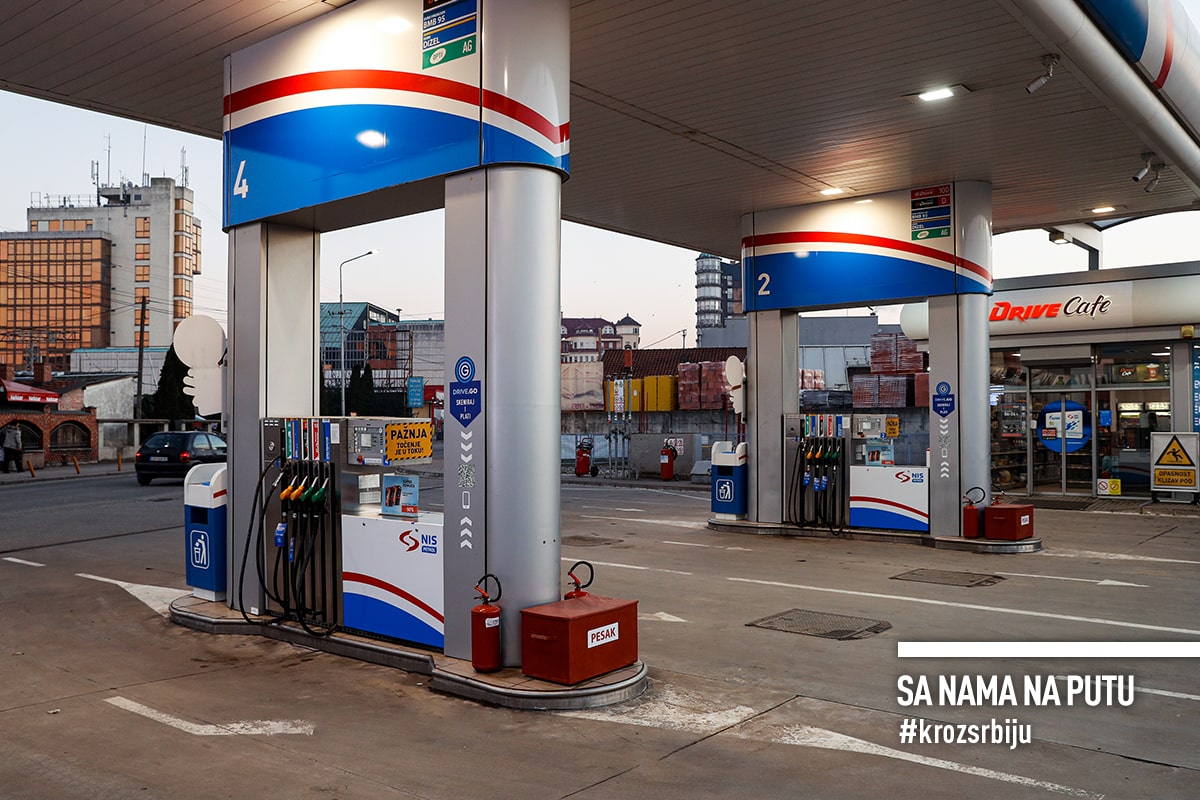We go to the west of the homeland, where nature has created wondrous landscapes, history has written heroic feats, and minds have shaped the future. To the beautiful Drina, the bumper and the clamp, ever since. In the homeland of folk speech and Serbian language and script nowadays. Loznica can be reached from Belgrade via Šabac and Sremska Mitrovica. Whether you want the route via Little Paris or the former Sirmium, it is your will.
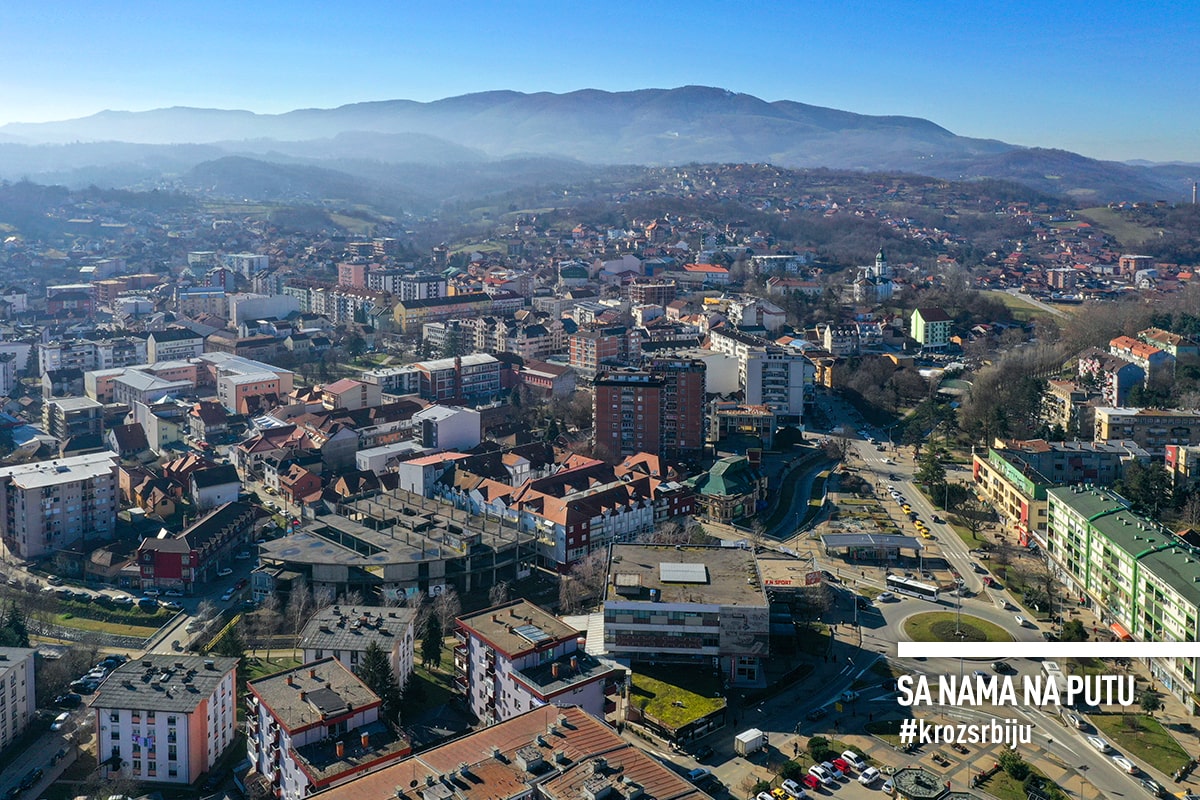
Why visit Loznica and Tršić?
1. Because Loznica is home to two great men
The Loznica region was inhabited around 4,500 B.C., the Illyrians had left it a rich material culture, and during the Romans it was part of the province of Dalmatia. The town is believed to be named after vines that have been cultivated since the third century. It is was mentioned for the first time in the writings of King Milutin’s charter on the occasion of the construction of the nearby monastery Tronoša in 1317. It was annexed to the Principality of Serbia at the time of Miloš Obrenović thus becoming a free peasant property.
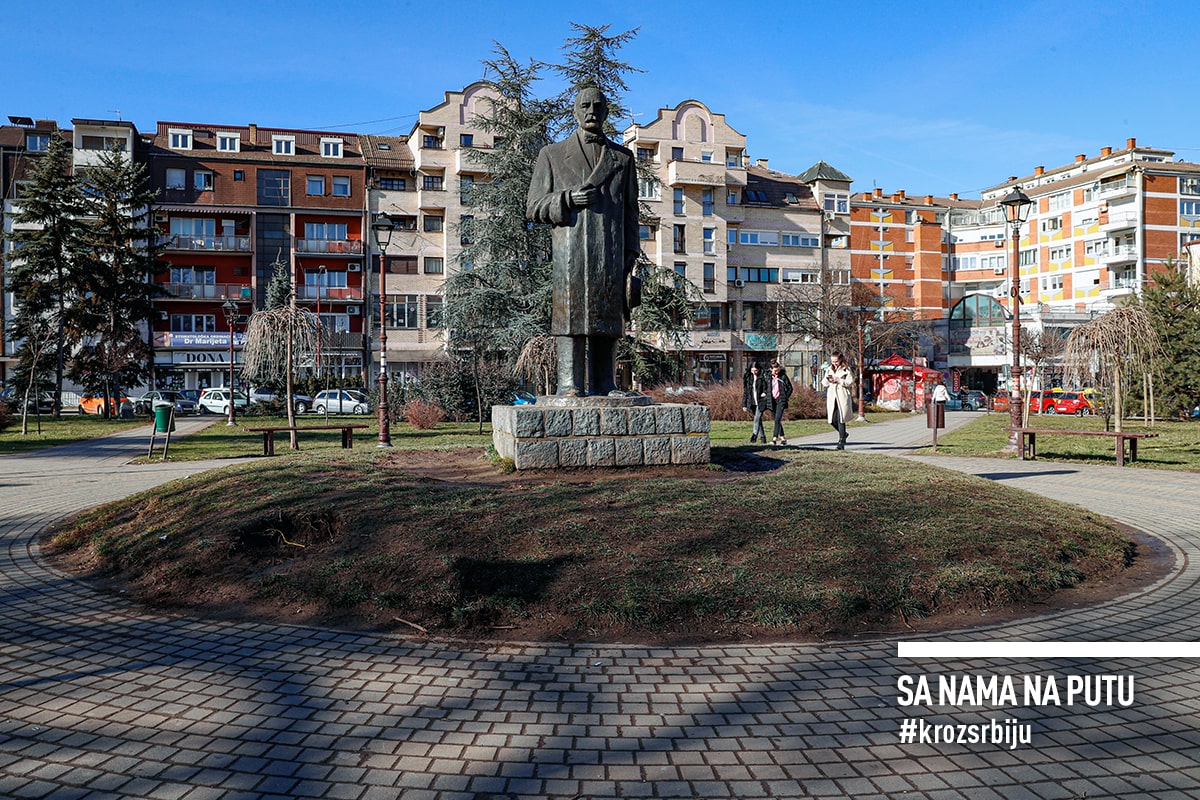
The birthplace of Jovan Cvijić, a scientist and founder of Serbian geography, and Miodrag Mića Popović, a famous painter and academician. Loznica erected a monument to Cvijić and dedicated a park and the main street to him. Popović donated about forty paintings and graphics to his homeland that are the heritage of the Gallery of Mića Popović. The works are often on tour through Serbia, and the possibility of seeing them depends on luck. We have not been lucky this time.
What stands among the city’s beauties are Vukov dom kulture (cultural centre), unusual appearance and decorative facades of bright color, the Jadra Museum, the Anta Bogićević elementary school, on the elevation of the former rebellious fortress, and the nearby Church of the Shroud of the Most Holy Virgin, erected in the second half of the XIX century on the site of the older building.
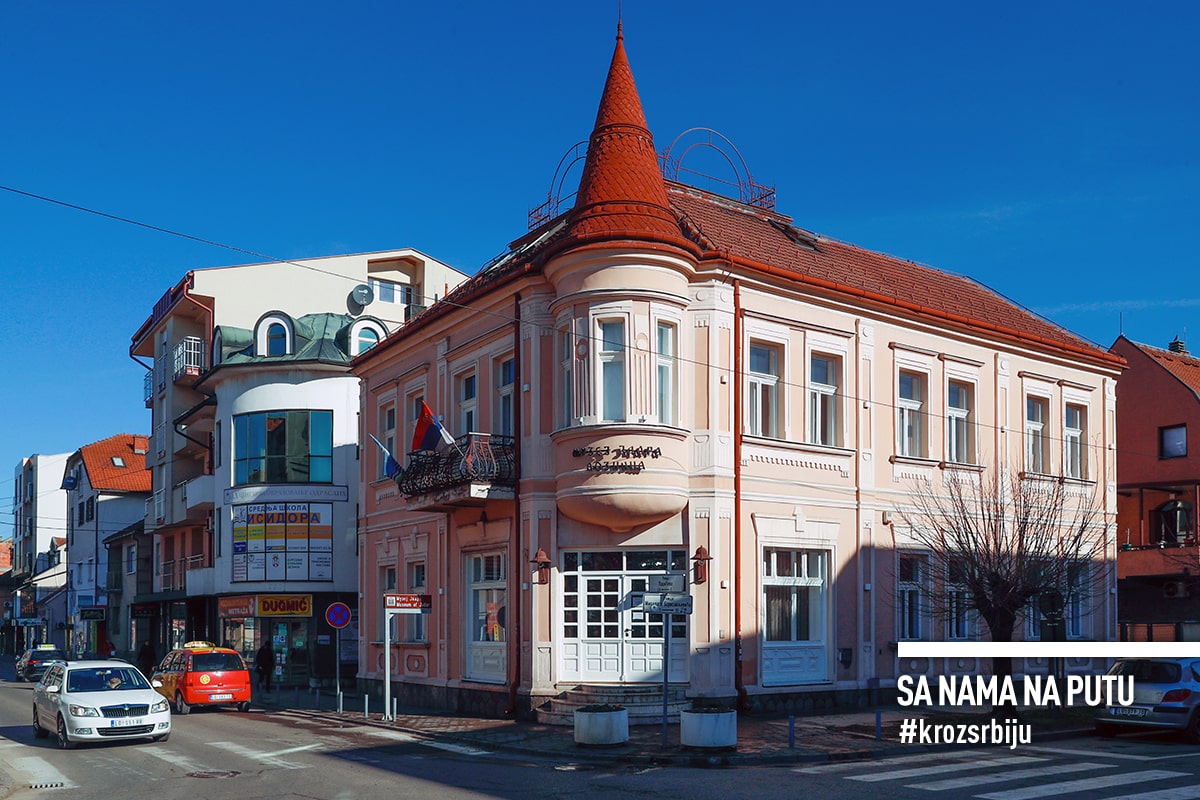
A small, but lively, hospitable and clean town, where two dialects, like the two shores of the Drina, compete together.
2. Because the Jadar river Museum preserves the Drina monoxyl
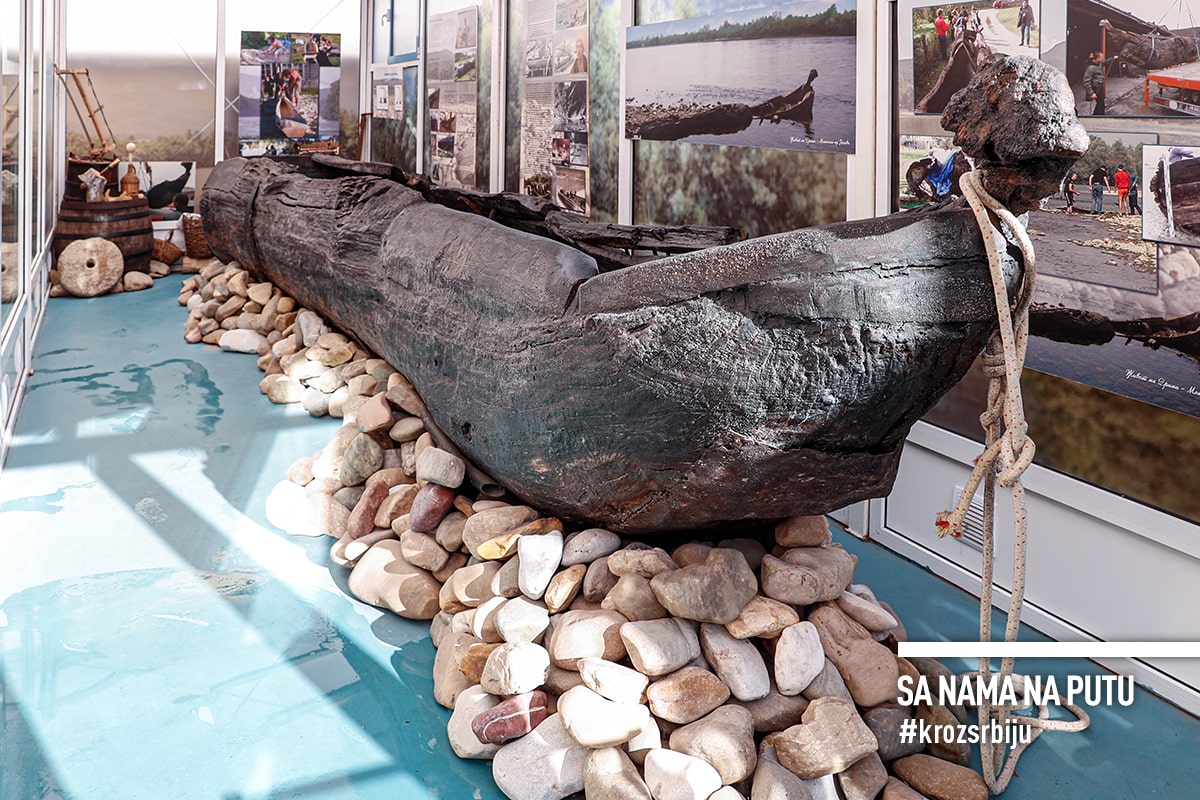
Monoxyl, an old vessel used to transport people and goods carved from a single piece of oak wood, was found on the coast of the Drina in 2011. The tip was sticking out of the ground, and it was spotted, who else, but by fishermen. It is seven meters long and weighs more than a ton and is considered an extremely rare example of this type of water transport estimated to be several centuries old. The river giant is worthy of a special place and adorns the museum’s little courtyard. True, you’d have a hard time getting it under the roof. But the rest of the exhibition about the Jadar region is worth seeing. It starts from prehistory and covers the period up to the middle of the last century. Particularly interesting objects were found at the nearby bronze site of Paulje, where a common tomb was excavated, and a model of the necropolis was shown. We relive the rebellious and warrior days of this region through a trench model, which played an important role in the Loznica Battle, also known as the Battle of Tičar, as well as the stories of the local duke from the first Serbian uprising, Ante Bogić, as well as of Momčilo Gavrić, the youngest participant in the Great War. After his entire family was killed by the enemy, an eight-year-old kid turned into a soldier. Later, he was taking part in breaking through the Thessaloniki Front. The ethnological collection contains interesting tools and pieces of furniture, and something to learn about Cvijić.
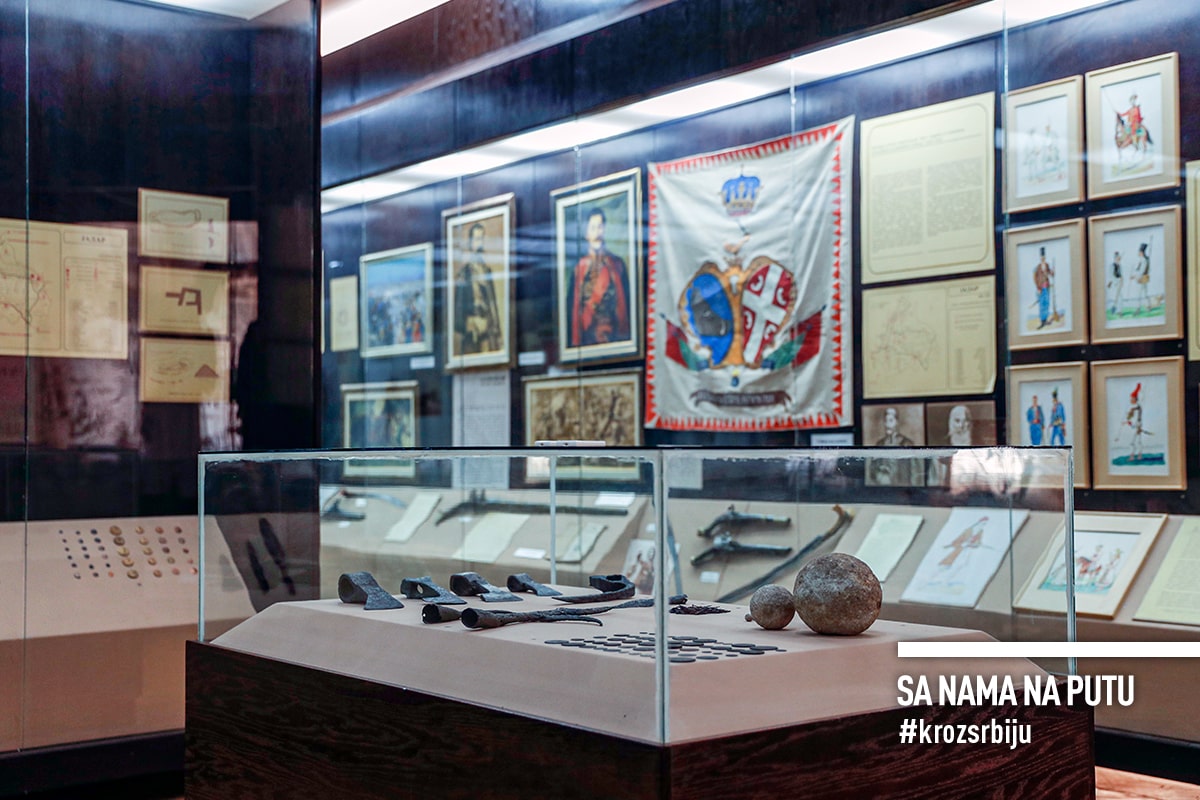
The museum is housed in an appealing building of an old pharmacy built at the beginning of the 20th century.
3. Because Tršić is the cradle of nowadays alphabet
Just a few kilometers from Loznica is Trsić, the birthplace of Vuk Stefanović Karadžić. Collector of folk intellectual creations and songs, linguist, reformer of the Serbian language, and writer of the first Serbian dictionary and grammar called Pismenica in the language of the common people. A lot of valuable things were left to us by Vuk, but the most precious thing is the priceless alphabet. Phonetic, perfect. Unique alphabet in the world. But, it seems that we’re not perfect enough to nurture it, so by being conceited, we hushed it up.
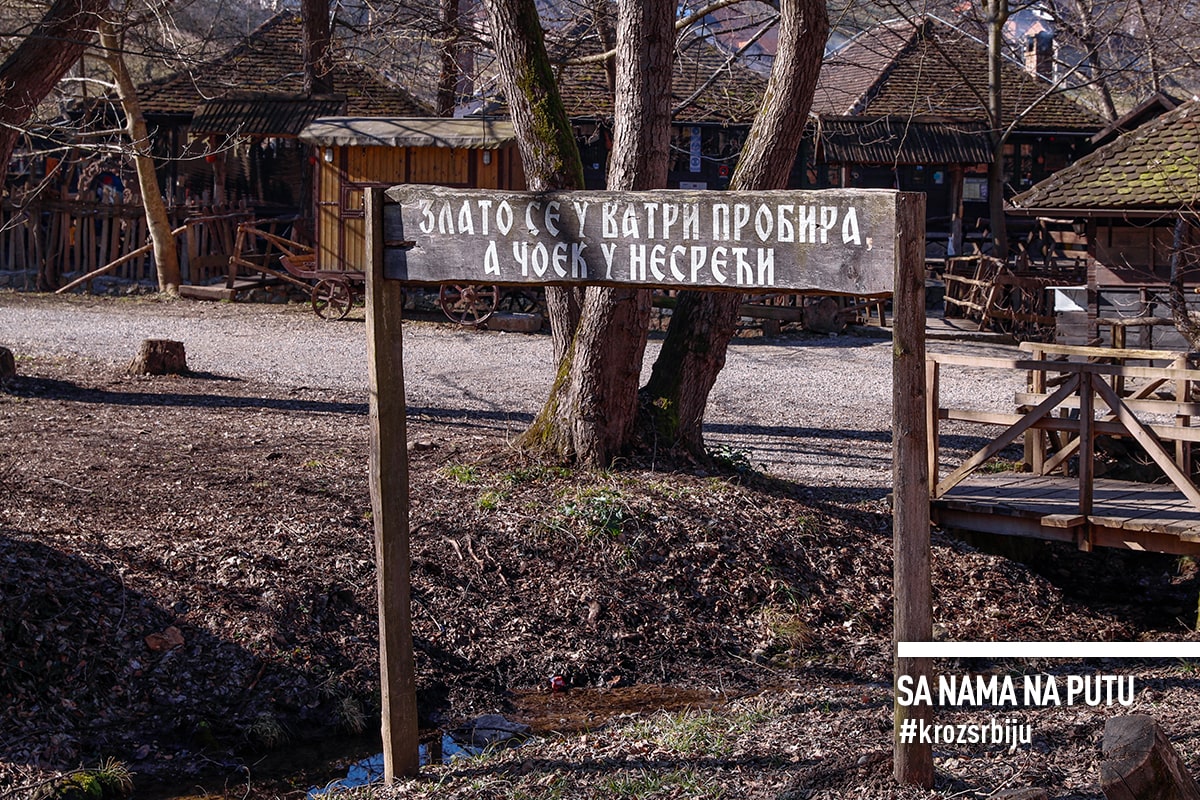
Vuk’s homeland today is part of the Region of Exceptional Characteristics Cultural Region Tršić-Tronoša. At the very entrance is the elementary school “Vuk Stefanović Karadžić” and the plea of young people that the cradle of Serbian literacy should not be tainted. It seems to have been respected.
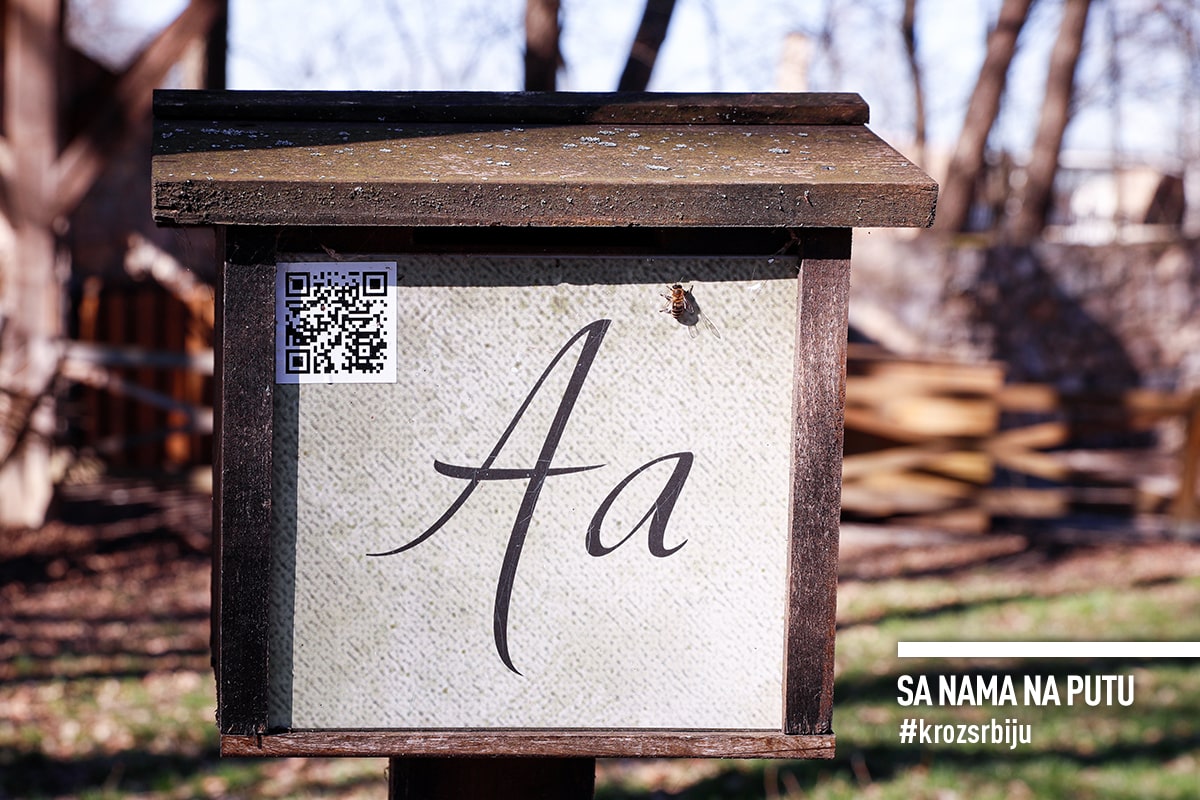
The Museum of Language and Alphabet represents important people from the Vuk’s era and shows the origin of Cyrillic. Vuk’s Alphabet Cases, 30 boxes resembling birdhouses for each letter of the Serbian alphabet, are placed around the Museum. On the boxes, a QR code is put through which visitors can get acquainted with the words from Vuk’s Dictionary that speak about folk customs, beliefs and traditions. If you have a folk word, write it on a piece of paper and throw it in the box. You will contribute to the preservation and enrichment of the language and thus become a real Vuk’s follower. That’s a great idea.
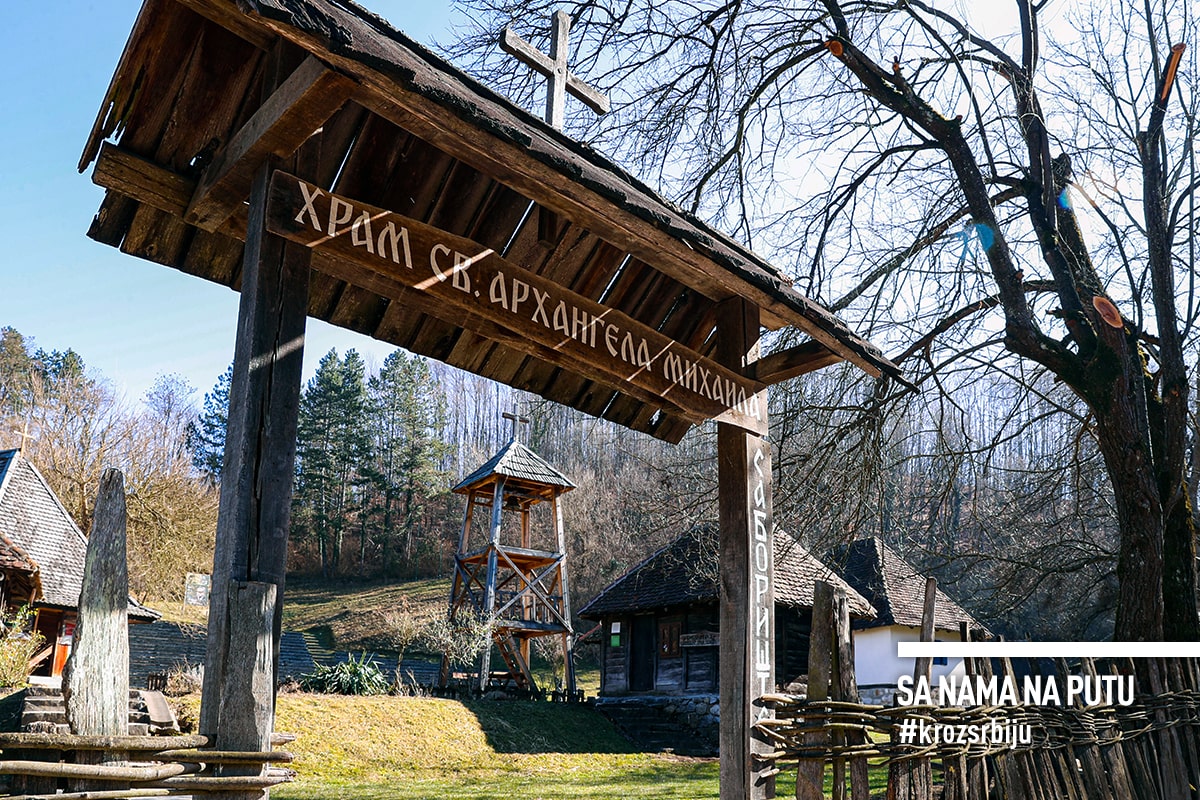
Vuk’s Home is accessible on foot. By the way, on the wooden boards, we read the engraved inscriptions of honor, justice and humanity. We pass by a meeting place with the wooden Church of St. Archangel Michael, and restored mills and houses with an antique look. Several hosts have returned from abroad and revived their old homes, as our host proudly tells us. At the top of the hill, across the Žeravija river, the founder of nowadays alphabet was born. At the entrance to the courtyard, we are greeted by the words of Vuk: “I was born and raised in Serbia and therefore it seems to me that there is no country in the world that is more beautiful than Serbia, nor a place more beautiful than Tršić.” We enter a humble cottage, a log cabin, on a stone basement. Not the original. According to Vuk’s records, the Turks burned it almost ten times during the rule of Karađorđe. But at the end of the 19th century, the locals marked the place of the original home with a cross placed in the bedroom of the Memorial House, erected in 1933. At that time, the first Vuk’s congregation was also held. In the courtyard are two wooden houses called “vajat”, a cottage for barrels and a barn.
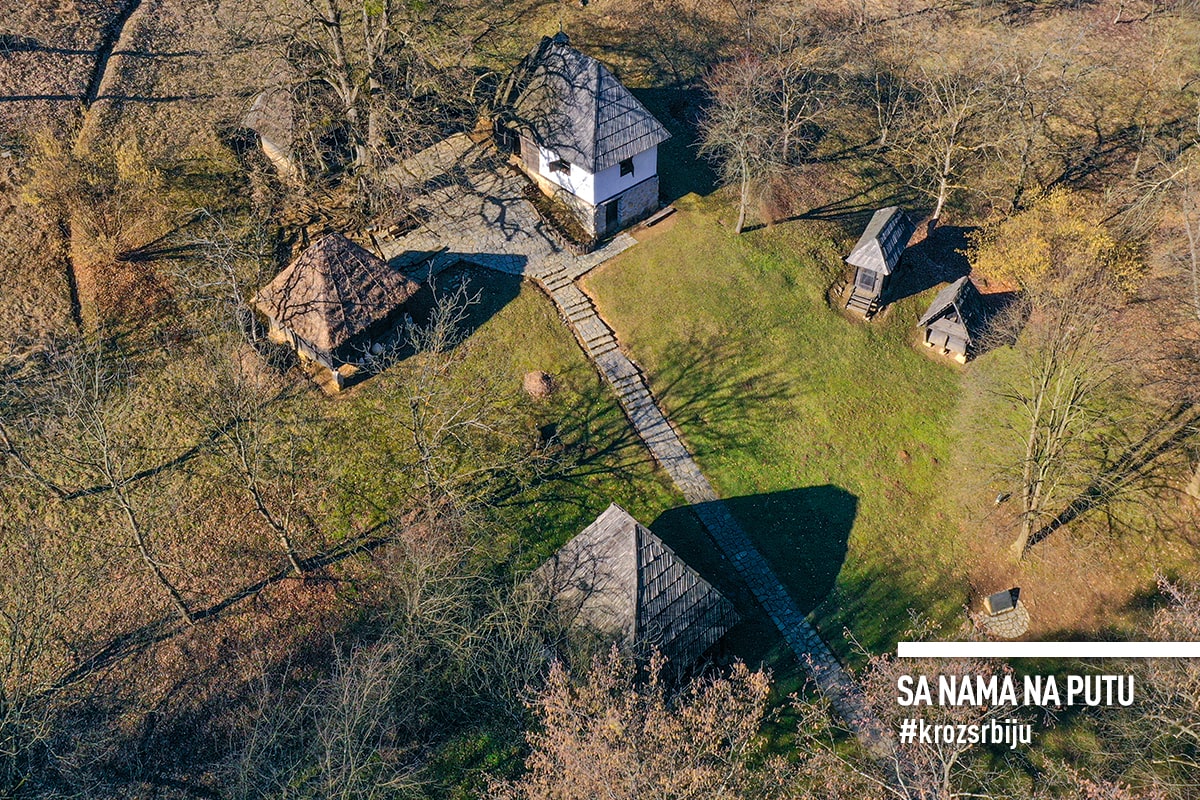
The homeland holds the memory of the Vuk with dignity. Pure, green, natural, buildings in wood and stone, and knowledge lures from everywhere. It just needs to be absorbed.
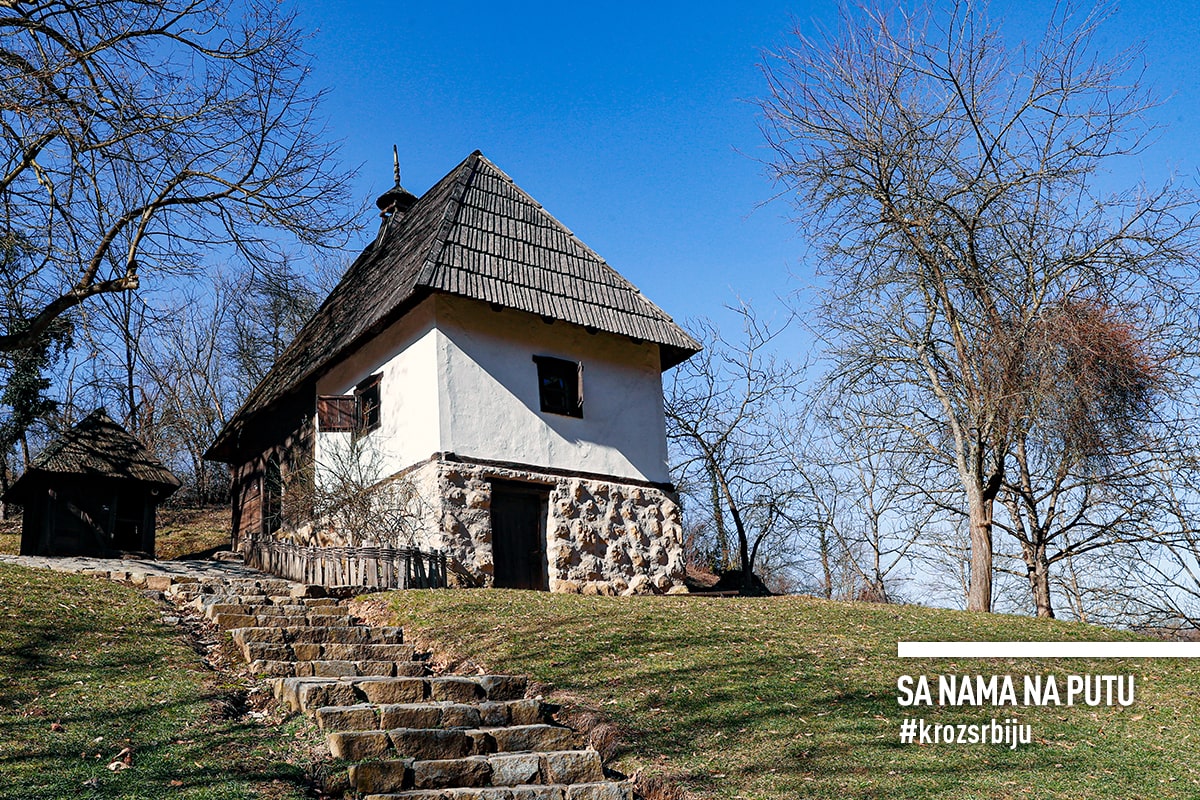
Nearby is the famous Tronoša Monastery where Vuk stayed for a short time, got a little education, and kept the herds. Take a stroll through the stunning surroundings, climb to the spring of the Žeravija, enjoy the preserved nature and the chirping of birds, memorize the creations, and renew the alphabet. If nowhere else in Serbia, it still rules here.
4. Because Koviljača is a royal banja
It is located not far from the Drina, at the foot of the forested mountain Gučevo. It is believed that people here have been treated since ancient times, and written sources mention medicinal waters in the first half of the 19th century. It is sometimes known as Smrdan Banja or Smrdan Bara for the sulfuric scents of beneficial mud. It was renamed in the early 19th century. According to one of many legends, it was named in honor of the wealthy Koviljka who built the city there.
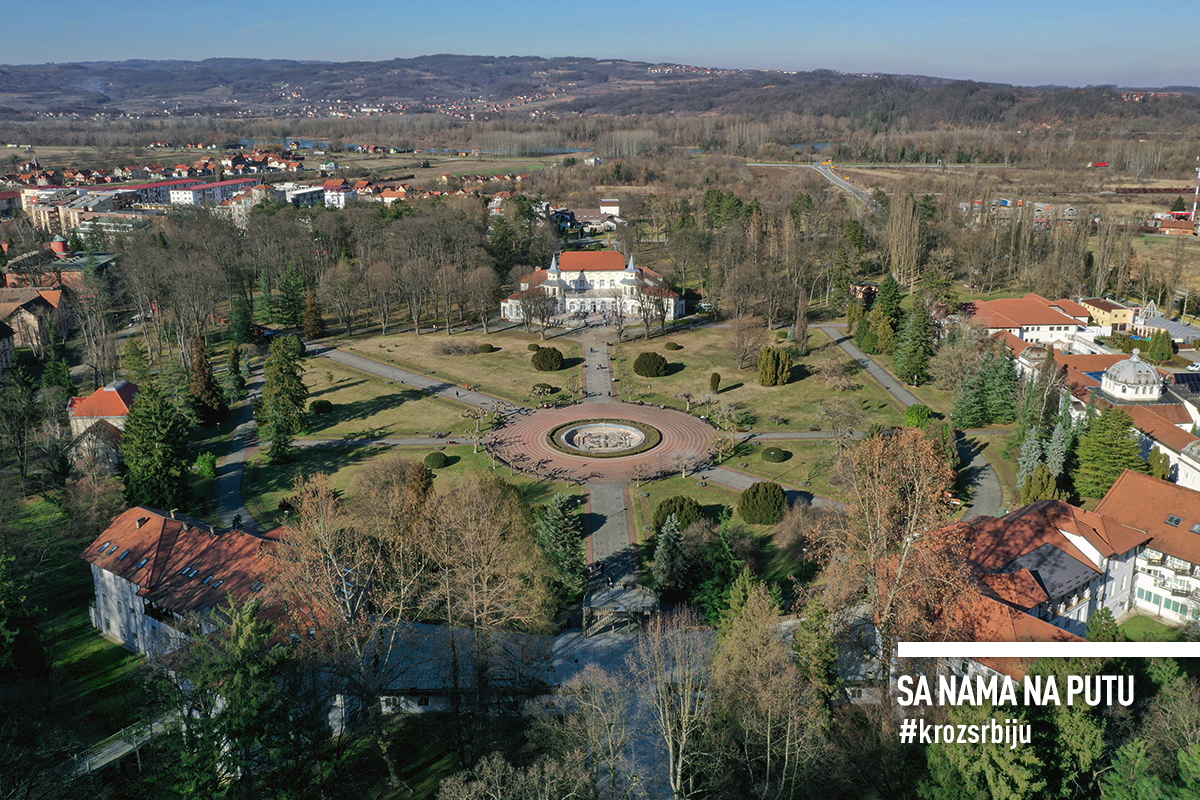
Today it is one of the most healing, but certainly the most beautiful health resorts in Serbia. The jewel of the beauty of Podrinje (the Drina region) is a lavishly landscaped park with more than 80 types of trees, flower arrangements, grassy areas, and a large fountain. It covers about 40 hectares and is one of the largest artificial oases of greenery in Serbia. In addition to the landscaped nature, the Kur-salon, built under the patronage of King Alexander I Karađorđević and modelled after the Viennese one, is also prey to beauty. In addition to the cure session (treatment), from the beginning he was also chosen for the entertainment of the gentlemen of aristocratic origin. Thus the spa from the derisive name of Smrdan (stinking) to the illustrious nickname of Royalty. The other one’s worth it today. Coffee shop on the spacious, sunny terrace of the Kur-salon overlooking the beautiful park with the sounds of the classical music. A few royal minutes you have to afford.
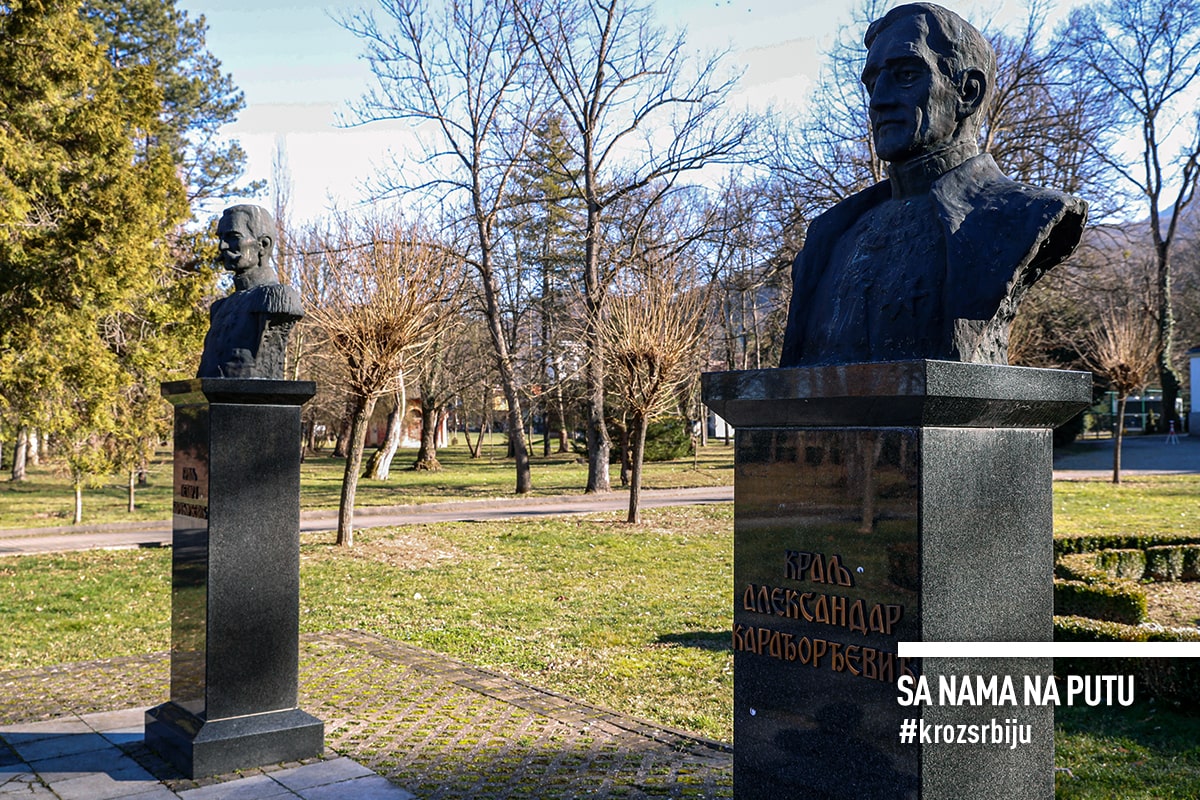
5. Because Gučevo is a heroic mountain
A wooded mountain that covers Banja Koviljača and waters it with mineral water from its sources. They take turns hornbeam, oak, beech, maple, and black pine, so one can breathe to the fullest. It is home to rabbits, foxes, various birds, roe deer, and there are some wolves. Favourite is the picnic area and destination of pedestrians, hikers, cyclists, bikers, adrenalin-run paragliders. The ride to the top is fairy-tale, but the road is not wide enough, so be cautious, especially on many curves.
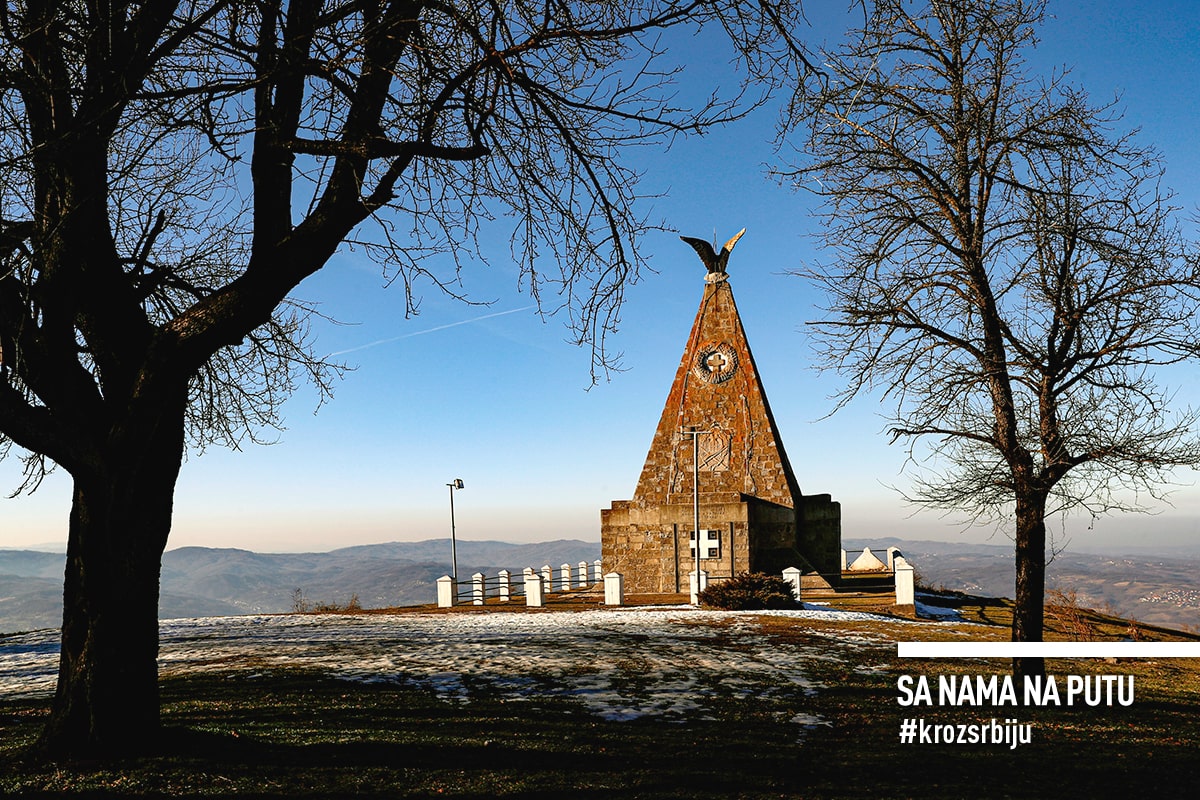
It enrolled in the history of Serbia after the first trench battle in the First World War. The Battle of Gučevo, fought during the Battle on the Drina in 1914, lasted 55 days and is known among the people as the Battle above Clouds. In memory of the fallen, a pyramid-shaped memorial was erected, 15 meters high with a two-headed eagle spreading its wings at the top. The remains of some 4,000 Serb and Austro-Hungarian soldiers were buried. The famous thought of Njegoš is written above the sarcophagus: “Blessed is one who lives ethernaly, he was worth being born.” From there, the eyes embrace a piece of the homeland around the Drina. Yeah, the heroes were motivated what to die for.
6. Because Ethno village “Sunny River” is an oasis of relaxation
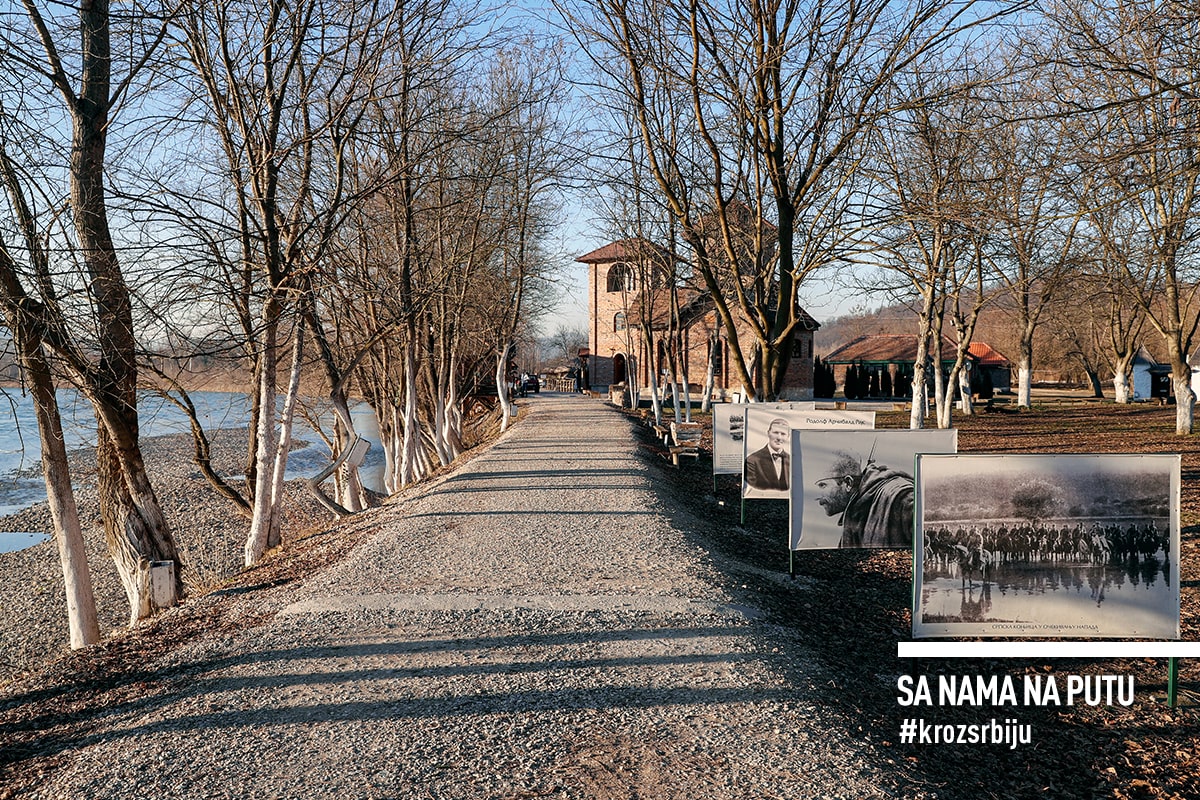
A few kilometers to the south, between the mountains of Gučevo and Majevica, the Ethnic village “Sunčana reka” (Sunny River) developed. Rather big, covering seven hectares, it provides a variety of facilities for rest and recreation – horseback riding, carriage and boat rides, tennis courts, football, basketball, and beach volleyball, a cheerful courtyard for the youngest, an outdoor exercise area, and the possibility of renting quads for exploring the surroundings. A special charm is given to the landscaped beach, where three famous domestic series were recorded. On the shore of an emerald beauty. Always cold, unpredictable, enchanting. There are also several restaurants and bars to eat and drink. The accommodation is divided into settlements made in the spirit of old times, each with its own peculiarities. One bears the name of the famous Hollywood actor Robert de Niro, who was enchanted by the Drina had so much, that he named his adopted daughter after her, according to many sources. The cottages are made of wood, bricks and stone, and five of them are just like the cottages they used to be, pile dwellings. Some hints of history never hurt, and the museum exhibition – the Drina through time – has been staged, but it is currently closed for renovation. Vacations in the old-fashioned way, home cooking, socializing with animals, and mirroring in clear waters of the Drina.
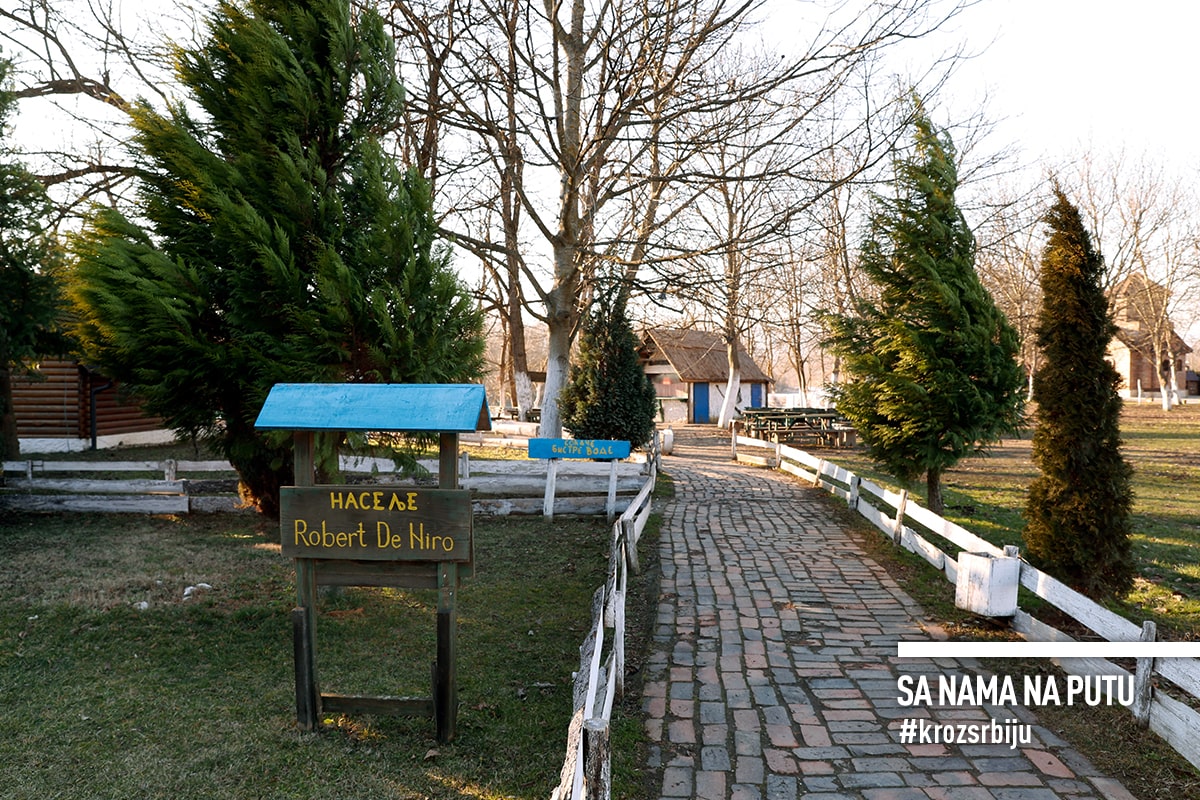
7. Because the Serbian tavern serves Argentine kebabs
There, you don’t have to cross the Atlantic into the land of Maradona to taste their kebabs, it is enough to cross the road to the Serbian Lodge in Loznica. The courtyard is cute, ethnic style, and the interior is small but pleasant. Apart from the “Argentine”, which we acknowledge is excellent, the offer is typical for a taverna. We order sausages, top-notch, homemade, and a burger on kaymak, which fills the plate. It would feed two persons with good appetite. But size can’t replace taste. It should be juicier and softer. Prices are decent, service quick and kind. Certainly recommended, especially for hungry women, just stick to sausages and kebabs made with the “God’s hand of football”.
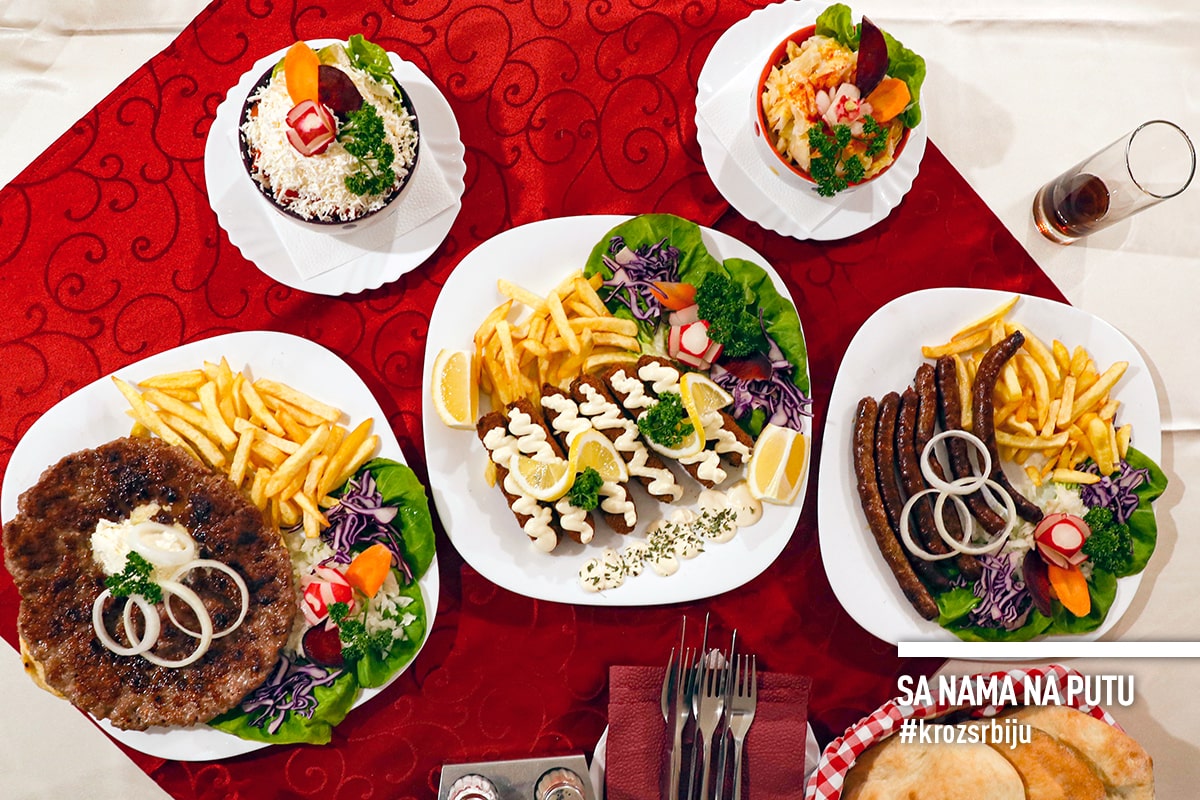
8. Because at PS Loznica you can pay for fuel without getting out of the car
After exotic tastes from the land of Maradona and the tango, it is time to dance back to Belgrade. And since the dance of love and death always takes two, we also have to water our four-wheeler. There is not enough fuel until the petrol station Loznica. We do not feel like moving with our fully fed stomachs, so we apply our favorite and very practical Drive.Go app. We pay for the fuel from the warm vehicle, comfortably and quickly. Now that we are all fed up and satisfied, we start engines for collecting impressions of experiences from the always ravishing western Serbia.
